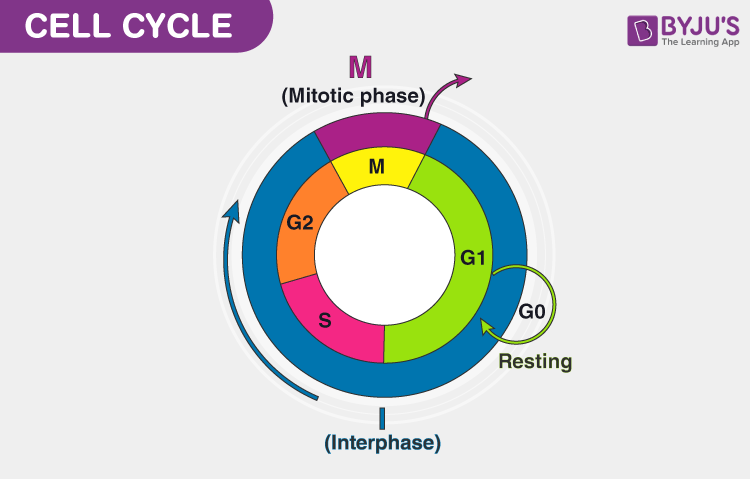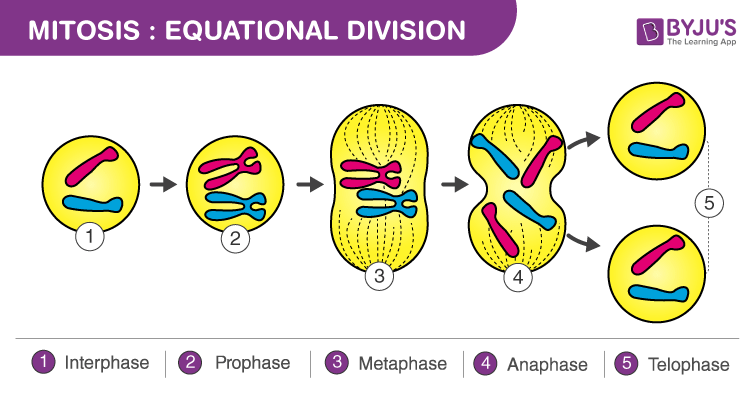6) Discuss different phases of the cell cycle with a suitable diagram.
6.) Discuss different phases of the cell cycle with a suitable diagram.
answer :
A.)
The cell is the basic structural and functional unit of any living being. It is the fundamental building block, which when combined with similar cells forms a tissue and organs. A cell comprises several organelles:
- Cytoplasm
- Cytoskeleton
- Endoplasmic reticulum (ER)
- Golgi apparatus
- Lysosomes and peroxisomes
- Mitochondria
- Nucleus
- Plasma membrane
- Ribosomes
The cell undergoes a series of events that result in the duplication of cell along with the DNA. This is known as the cell cycle. Let us have a look at the events taking place in the division of cell during a cell cycle.
Also Read: Difference between Karyokinesis and Cytokinesis
Cell Cycle Definition
“Cell cycle refers to the series of events that take place in a cell, resulting in the duplication of DNA and division of cytoplasm and organelles to produce two daughter cells.”

What is Cell Cycle?
The cell cycle was discovered by Prevost and Dumas (1824) while studying the cleavage of zygote of Frog. It is a series of stages a cell passes through, to divide and produce new cells.
This entire process where with the help of one single parent cell a new cell population grows and develops is known as the cell cycle.
Also Read: Meiosis I
Phases of Cell Cycle
Cell cycle or cell division refers to the series of events that take place in a cell leading to its maturity and subsequent division. These events include duplication of its genome and synthesis of the cell organelles followed by division of the cytoplasm.
Human cells exhibit typical eukaryotic cell cycle and take around 24 hours to complete one cycle of growth and division. The duration of the cycle, however, varies from organism to organism and cell to cell.
A typical eukaryotic cell cycle is divided into two main phases:-
Interphase
Also known as the resting phase of the cell cycle; interphase is the time during which the cell prepares for division by undergoing both cell growth and DNA replication. It occupies around 95% time of the overall cycle. The interphase is divided into three phases:-
- G1 phase (Gap 1) – G1 phase is the phase of the cell between mitosis and initiation of replication of the genetic material of the cell. During this phase, the cell is metabolically active and continues to grow without replicating its DNA.
- S phase (Synthesis) – DNA replication takes place during this phase. If the initial quantity of DNA in the cell is denoted as 2N, then after replication it becomes 4N. However the number of chromosomes does not vary, viz., if the number of chromosomes during G1 phase was 2n, it will remain 2n at the end of S phase. The centriole also divides into two centriole pairs in the cells which contain centriole.
- G2 phase (Gap 2) –During this phase, the RNA, proteins, other macromolecules required for multiplication of cell organelles, spindle formation, and cell growth are produced as the cell prepares to go into the mitotic phase.
Some cells like cardiac cells in the adult animals do not exhibit division and some others only divide to replace those cells which have been either damaged or lost due to cell death. Such cells which do not divide further attain an inactive G0 phase also known as quiescent phase after they exit the G1 phase. These cells remain metabolically active but do not divide unless called upon to do so.
M phase
This is the mitotic phase or the phase of the equational division as the cell undergoes a complete reorganization to give birth to a progeny that has the same number of chromosomes as the parent cell. The other organelles are also divided equally by the process of cytokinesis which is preceded by mitotic nuclear division. The mitotic phase is divided into four overlapping stages:-
- Prophase,
- Metaphase,
- Anaphase, and
- Telophase
Mitosis

The process by which a eukaryotic cell separates the nuclear DNA and chromosomes and divides into two different but similar sets of nuclei is known as mitosis. The chromosomes are pulled apart by a mitotic spindle, which is a specialized structure consisting of microtubules.
Cytokinesis
In this phase, the cytoplasm of the cell divides. It begins as soon as the mitosis ends. Plant cells are much tougher than animal cells, as they have a rigid cell wall and high internal pressure. Thus, cytokinesis occurs in plant and animal cells differently.
Comments
Post a Comment